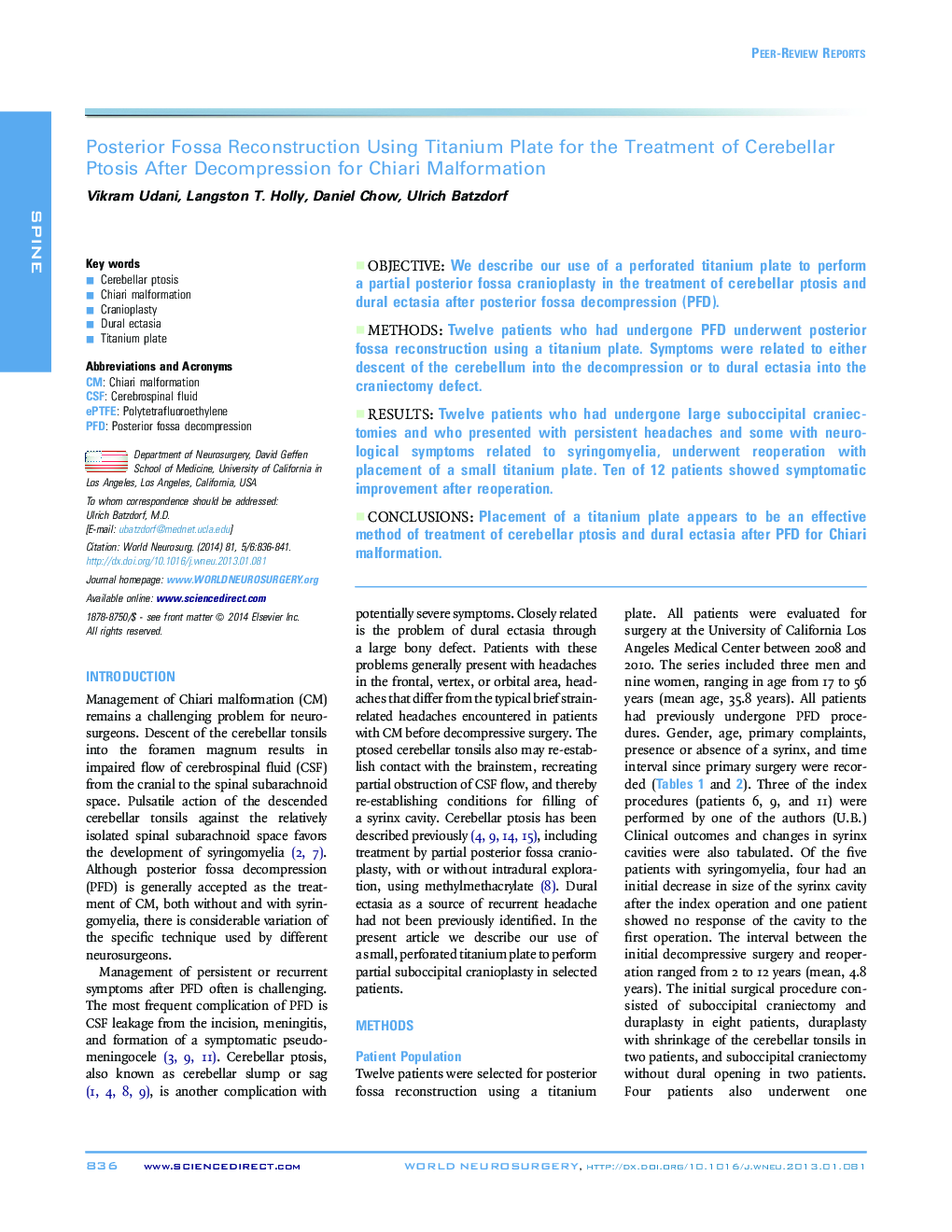| Article ID | Journal | Published Year | Pages | File Type |
|---|---|---|---|---|
| 6045845 | World Neurosurgery | 2014 | 6 Pages |
ObjectiveWe describe our use of a perforated titanium plate to perform a partial posterior fossa cranioplasty in the treatment of cerebellar ptosis and dural ectasia after posterior fossa decompression (PFD).MethodsTwelve patients who had undergone PFD underwent posterior fossa reconstruction using a titanium plate. Symptoms were related to either descent of the cerebellum into the decompression or to dural ectasia into the craniectomy defect.ResultsTwelve patients who had undergone large suboccipital craniectomies and who presented with persistent headaches and some with neurological symptoms related to syringomyelia, underwent reoperation with placement of a small titanium plate. Ten of 12 patients showed symptomatic improvement after reoperation.ConclusionsPlacement of a titanium plate appears to be an effective method of treatment of cerebellar ptosis and dural ectasia after PFD for Chiari malformation.
